More than 30% of U.S. dermatologists now suggest polynucleotides over Botox. This marks a big change in the $8 billion skincare market. Forget the “frozen face” look. Polynucleotides, a new anti-aging science, change how we fight wrinkles and get back youthful skin.
Unlike Botox, which just freezes muscles, this treatment uses your body’s healing to make collagen. This is a game-changer in anti-aging.
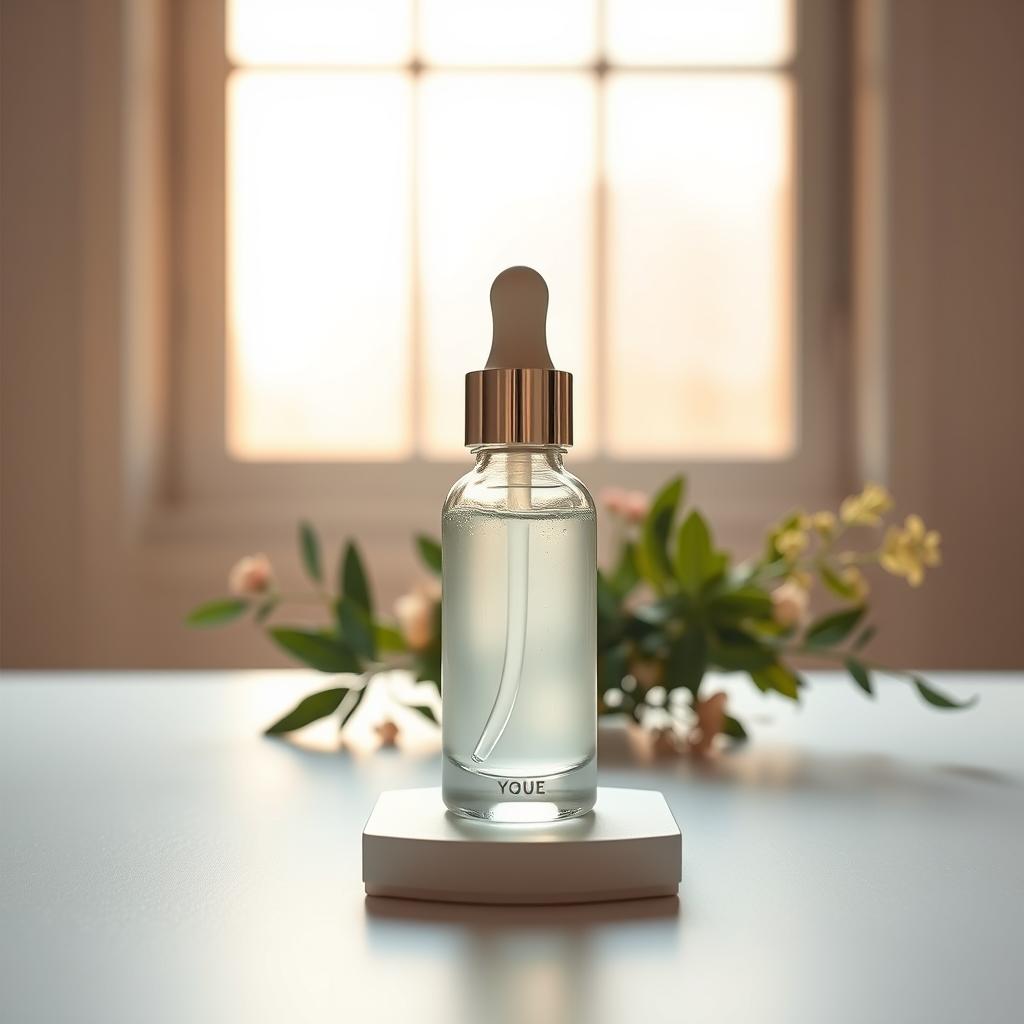
From Hollywood’s red carpets to your local medspa, polynucleotide skincare trends are on the rise. These tiny molecules don’t just hide aging; they fix skin at the cell level. Think of smoother skin, fewer shots, and lasting results.
Experts say they’re the future of beauty treatments.
Key Takeaways
- Polynucleotides outpace Botox in natural-looking rejuvenation
- 30% of U.S. dermatologists now prioritize this treatment
- Boosts collagen production for long-term skin health
- No downtime compared to traditional injectables
- Leading why polynucleotides are the new botox movement in 2024
Understanding Polynucleotides: The Revolutionary Skin Treatment
Polynucleotide therapy is a new way to make your skin look younger. It uses natural molecules to start your body’s healing process. Let’s explore how it works for your skin.
What Are Polynucleotides?
Polynucleotides are made of nucleotide chains, the same stuff as DNA. In skin treatments, they come from salmon or trout DNA. They’re purified to help your skin. These molecules send signals to fix and refresh your skin cells.
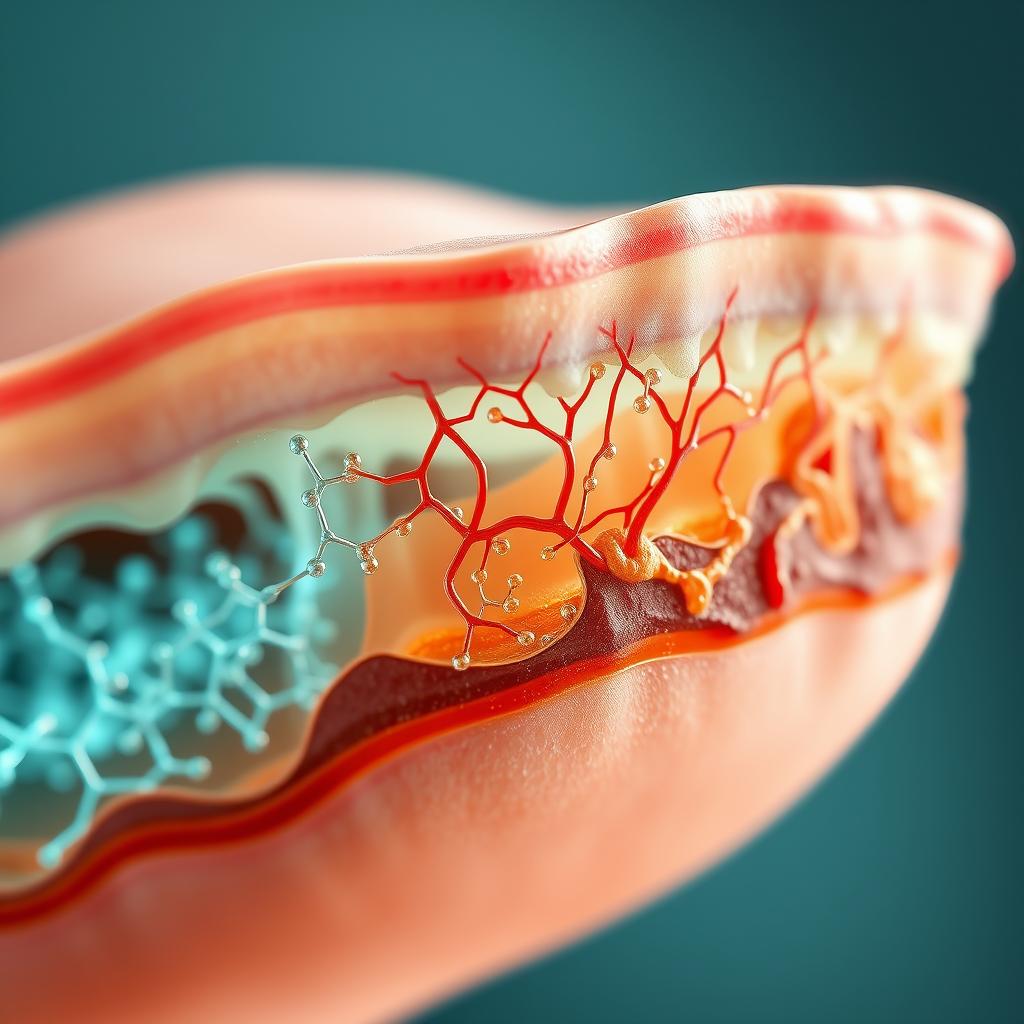
The Science Behind Polynucleotide Therapy
- When injected, polynucleotides bind to receptors in your skin cells.
- They activate fibroblasts, the cells that make collagen and elastin.
- This starts a natural healing process, improving tissue repair and hydration.
How Polynucleotides Rejuvenate Your Skin
These biological signals work with your body’s systems, not against them. Over time, you’ll see smoother skin, fewer wrinkles, and firmer skin. It’s different from Botox, which freezes muscles. Polynucleotide therapy boosts your skin’s natural renewal. The results feel natural because they’re based on your cells’ own healing.
The Evolution of Anti-Aging Treatments: From Botox to Polynucleotides
Anti-aging skincare has evolved a lot. In the 1990s, Botox became famous for smoothing wrinkles by paralyzing muscles. But, users soon saw its temporary effects and the “frozen face” look. Now, botox alternatives like polynucleotide anti-aging are changing beauty standards.

- Botox was once the top choice for quick wrinkle fixes but didn’t improve skin health.
- People started looking for treatments that enhance skin quality over time, not just temporary solutions.
- Polynucleotides are a breakthrough that boosts collagen and repairs skin cells, giving a natural glow.
| Old Approach | New Science |
|---|---|
| Botox | Polynucleotide Anti-Aging |
| Paralyzes muscles | Activates cell renewal |
| Short-term fixes (3–4 months) | Lasting skin rejuvenation |
| Risk of unnatural appearance | Natural results through collagen boost |
Your skin needs more than quick fixes. With polynucleotide anti-aging, you’re choosing a holistic method that works with your body’s healing. No more choosing between looking young and being yourself.
Why Polynucleotides Are the New Botox: A Game-Changer in Cosmetic Medicine
Looking at comparison botox vs polynucleotides, polynucleotides stand out. They don’t freeze muscles like Botox does. Instead, they work with your body to heal your skin. This makes them a new way to fight aging.
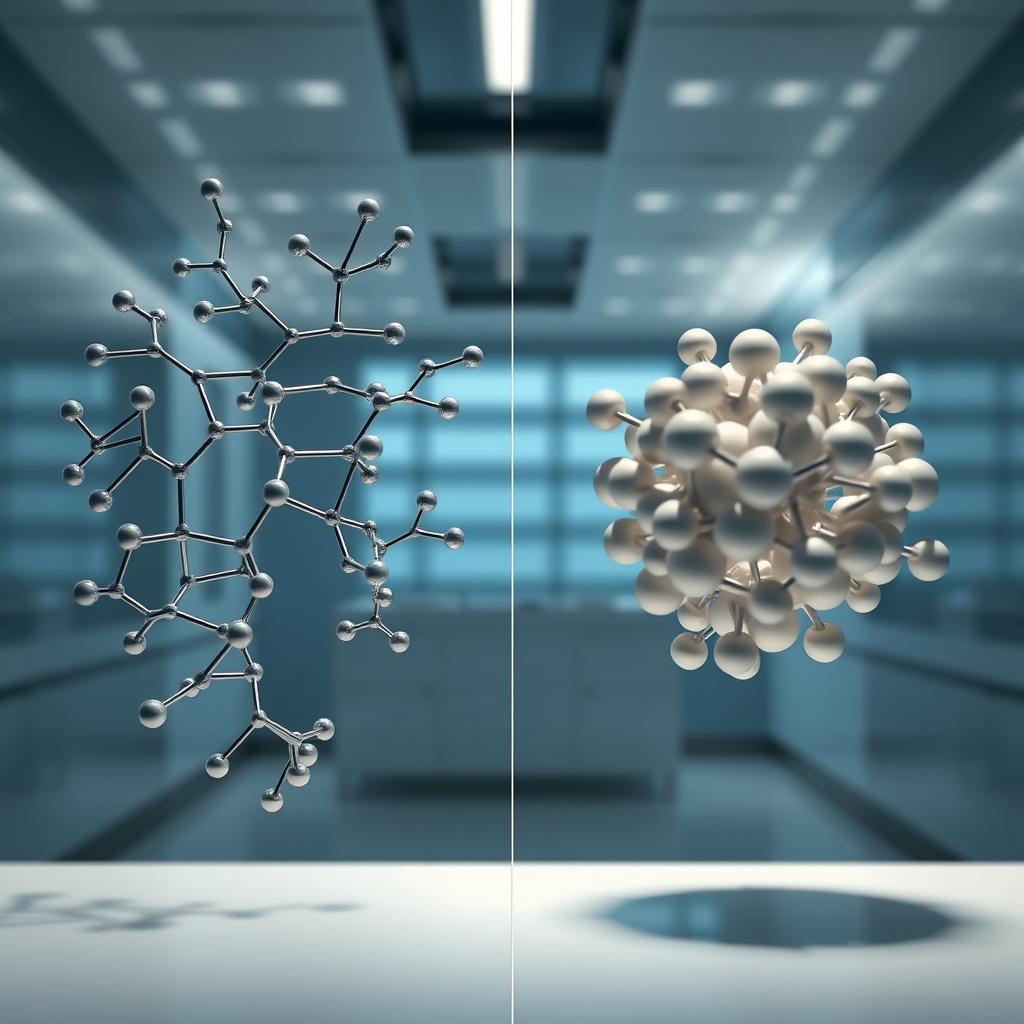
Natural Results vs. Frozen Appearance
Polynucleotides smooth wrinkles but let you still show your feelings. Botox can make you look frozen by stopping muscle movement. Polynucleotides boost collagen for a natural, glowing look.
Skin Regeneration vs. Muscle Paralysis
Botox blocks nerve signals to muscles. Polynucleotides, on the other hand, fix skin from the inside out. This change from covering up to fixing is why they’re seen as the new Botox.
Long-Term Benefits vs. Short-Term Solutions
Polynucleotides start a long process that keeps working for months. Botox effects last only 3-4 months, needing more shots. Polynucleotides keep improving your skin even after the first treatment.
Versatility in Treatment Areas
While Botox focuses on specific wrinkles, polynucleotides tackle more. They enhance texture, hydration, and tone on cheeks, necks, and hands. This makes them a more complete solution.
Top Benefits of Polynucleotide Injections You Need to Know
Polynucleotide injections are a deep way to make your skin look better. They work with your body to fight aging from the inside out. This means lasting results.

Boosting Collagen Production
These injections make your skin cells produce more collagen. This is the protein that keeps your skin tight. Studies show you can get up to 30% more collagen in just 6 months. This makes your skin look young and firm without surgery.
Improving Skin Elasticity and Texture
- Crepey skin gets softer as collagen builds up.
- Pores get smaller as cells organize better.
- Uneven skin textures even out as the skin’s structure improves.
Reducing Fine Lines and Wrinkles
Unlike Botox, which freezes muscles, polynucleotide injections fix the skin itself. They make fine lines and wrinkles less visible by tackling aging at its source.
Hydration at a Cellular Level
These injections also help your skin hold onto moisture better. This is because they boost hyaluronic acid, your skin’s natural water keeper. Your skin stays hydrated and looks healthier for longer.
Botox vs. Polynucleotides: A Head-to-Head Comparison
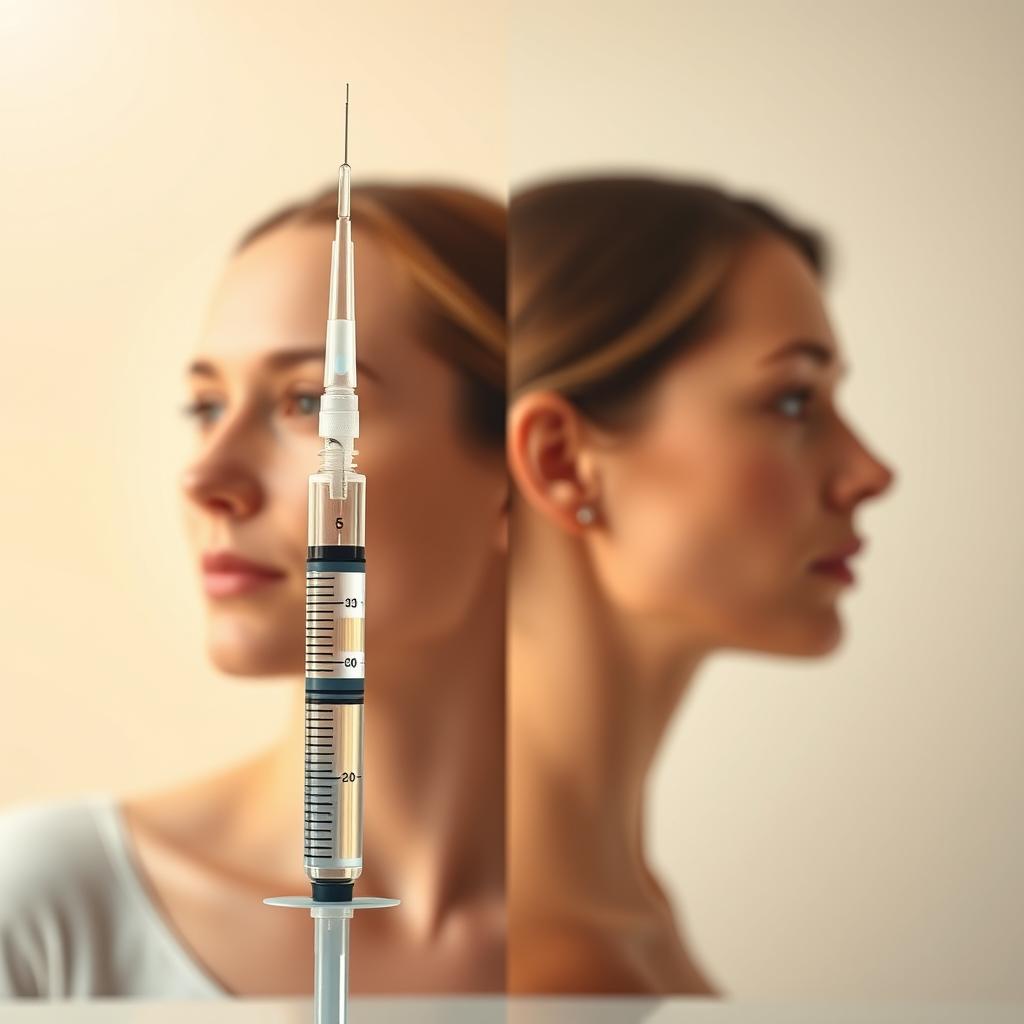
When deciding between Botox and polynucleotides, it’s important to know the differences. Here’s a detailed look at how these treatments compare:
- How they work: Botox stops muscle movement by blocking nerve signals, which temporarily reduces wrinkles. Polynucleotides, on the other hand, send signals to boost collagen and repair skin from the inside.
- Results timeline: Botox shows results in 3–5 days but lasts only 3–4 months. Polynucleotides take 2–4 weeks to start working and can improve skin quality for 6–12 months, making them a great botox alternative.
- Feel and appearance: Botox can make skin feel stiff and look frozen. Polynucleotides, however, smooth out skin naturally without changing how you look.
- Cost: Botox costs $300–$600 per area but needs to be done every 3–4 months. Polynucleotides might cost more upfront ($800–$1,200) but offer longer-lasting benefits.
“Polynucleotides are a game-changer for patients seeking gradual, holistic rejuvenation instead of Botox’s instant but temporary fixes.” – Dr. Emily Carter, Dermatologist at Advanced Aesthetics NYC
Think about what you want: quick fixes for specific lines or long-term skin health. Botox is good for quick fixes. Polynucleotides are better for natural aging prevention and long-term skin health. Talk to a certified provider to find the best option for your skin.
What to Expect During and After Your Polynucleotide Treatment
Choosing polynucleotide cosmetic treatment means a straightforward experience. Here’s a clear breakdown of each step to set your expectations:
The Injection Process Explained
Your session starts with a brief consultation to identify your skin goals. The actual polynucleotide injections take 30–45 minutes. Providers use ultra-fine needles to deliver the solution into targeted areas like wrinkles or dull zones. Numbing cream is optional but rarely needed, as most describe the sensation as a light pinch. No sedation is required, and you can resume daily activities immediately after.
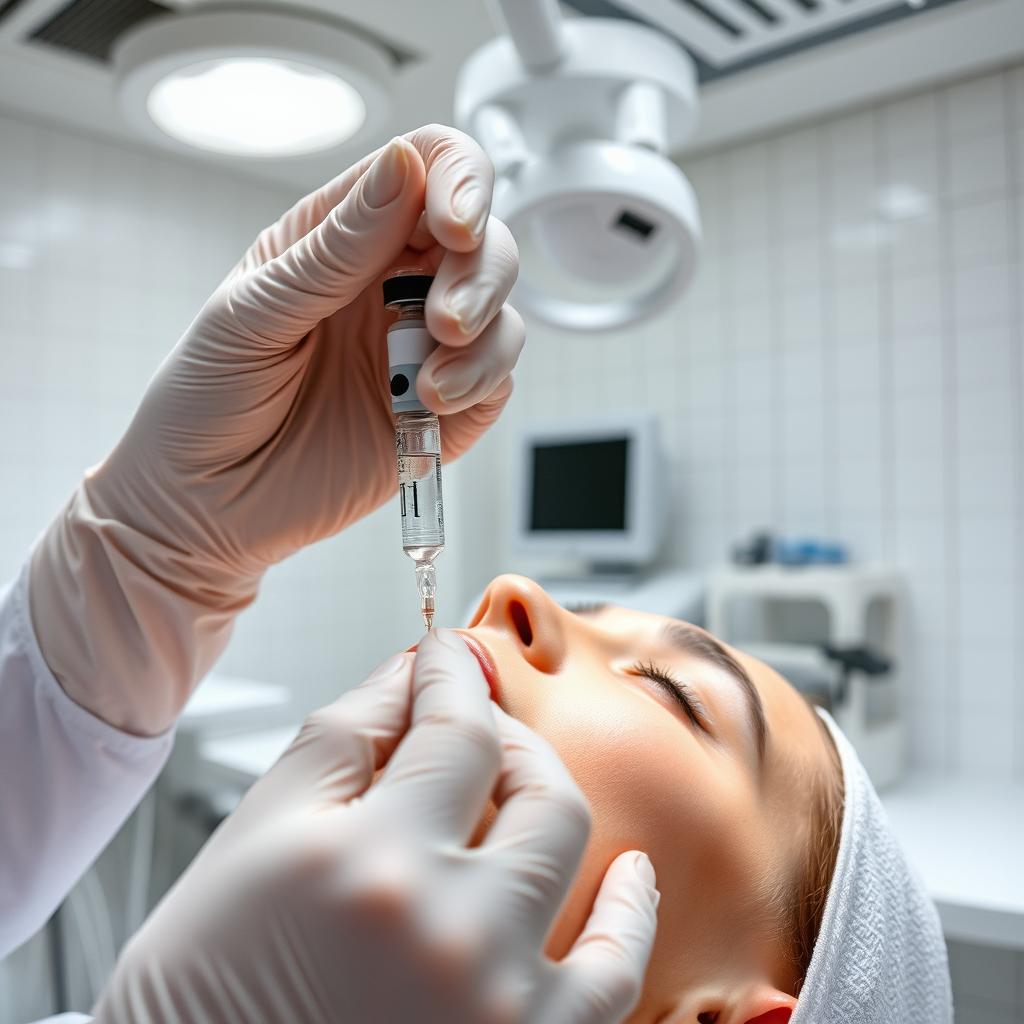
Immediate Aftercare Tips
After your treatment, follow these simple steps for best results:
- Avoid intense exercise, saunas, or alcohol for 24 hours.
- Use gentle skincare—skip retinol or exfoliants for 48 hours.
- Apply a cold compress if minor redness occurs.
Timeline for Visible Results
Here’s how your skin transforms over time:
| Time Frame | Effects |
|---|---|
| Days 1–3 | Minor redness fades; initial hydration boost. |
| Weeks 1–2 | Improved skin texture and softness. |
| Months 1–3 | Full collagen stimulation; visible lift and firmness. |
Unlike Botox’s immediate effects, results build progressively over months, creating lasting rejuvenation.
Are You an Ideal Candidate for Polynucleotide Skin Rejuvenation?
Choosing the right treatment starts with knowing your unique needs. Polynucleotide therapy can transform your skin. But, it’s important to check if it matches your goals and health. Let’s look at what matters most.
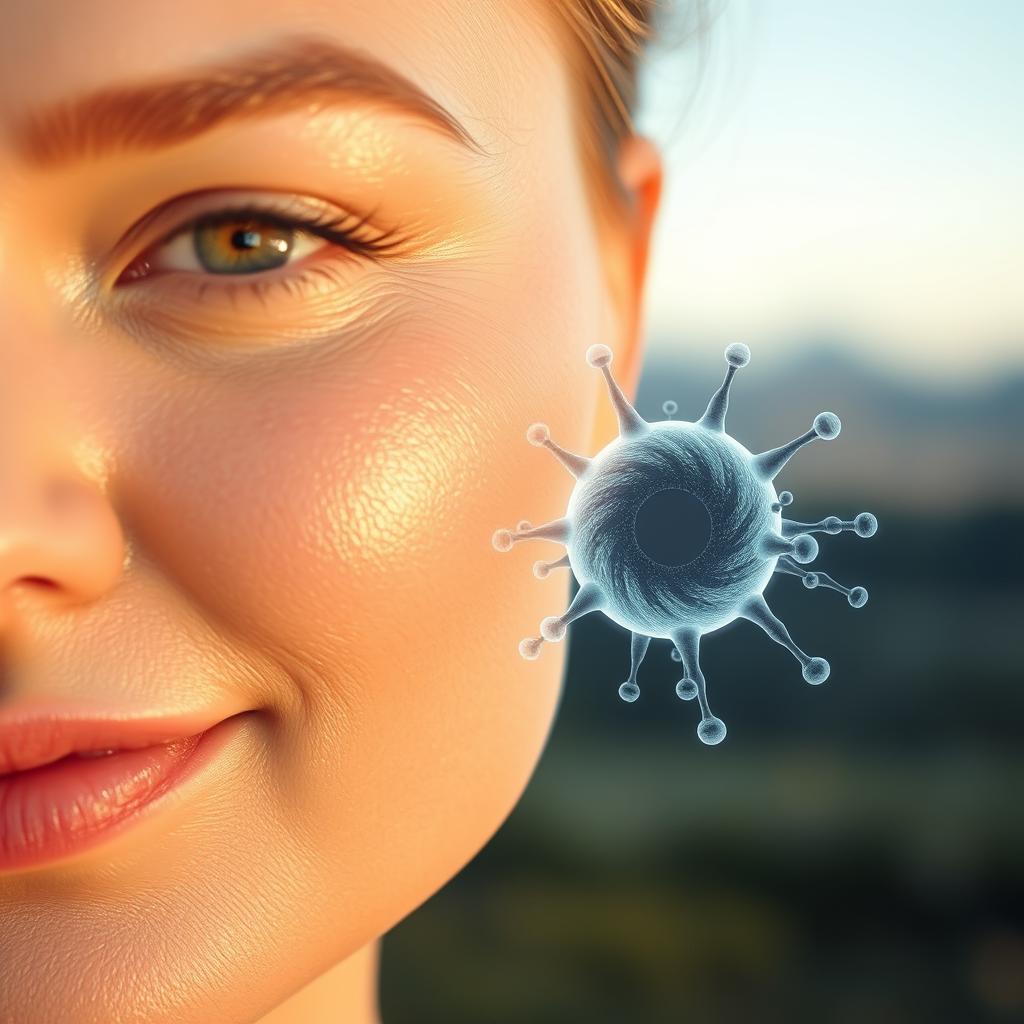
Age Considerations for Treatment
Polynucleotide therapy works for different age groups:
- 30s-40s: Preventive care to delay early signs of aging
- 50s and older: Targets deeper wrinkles and loss of firmness
Skin Concerns Best Addressed by Polynucleotides
Here’s how this treatment targets your skin’s needs:
| Skin Issue | How It Helps |
|---|---|
| Fine lines | Boosts collagen to reduce lines |
| Crepiness | Improves skin texture and firmness |
| Dullness | Enhances cellular turnover for brighter skin |
Medical Considerations and Contraindications
Before starting treatment, review these factors:
- Pregnancy/breastfeeding: Avoid until after childbirth
- Autoimmune conditions: Discuss with your doctor
- Medications: Inform your provider about current prescriptions
Your practitioner will review your medical history to ensure safety. Always schedule a consultation to confirm compatibility.
The Cost Factor: Polynucleotide Therapy vs. Regular Botox Treatments
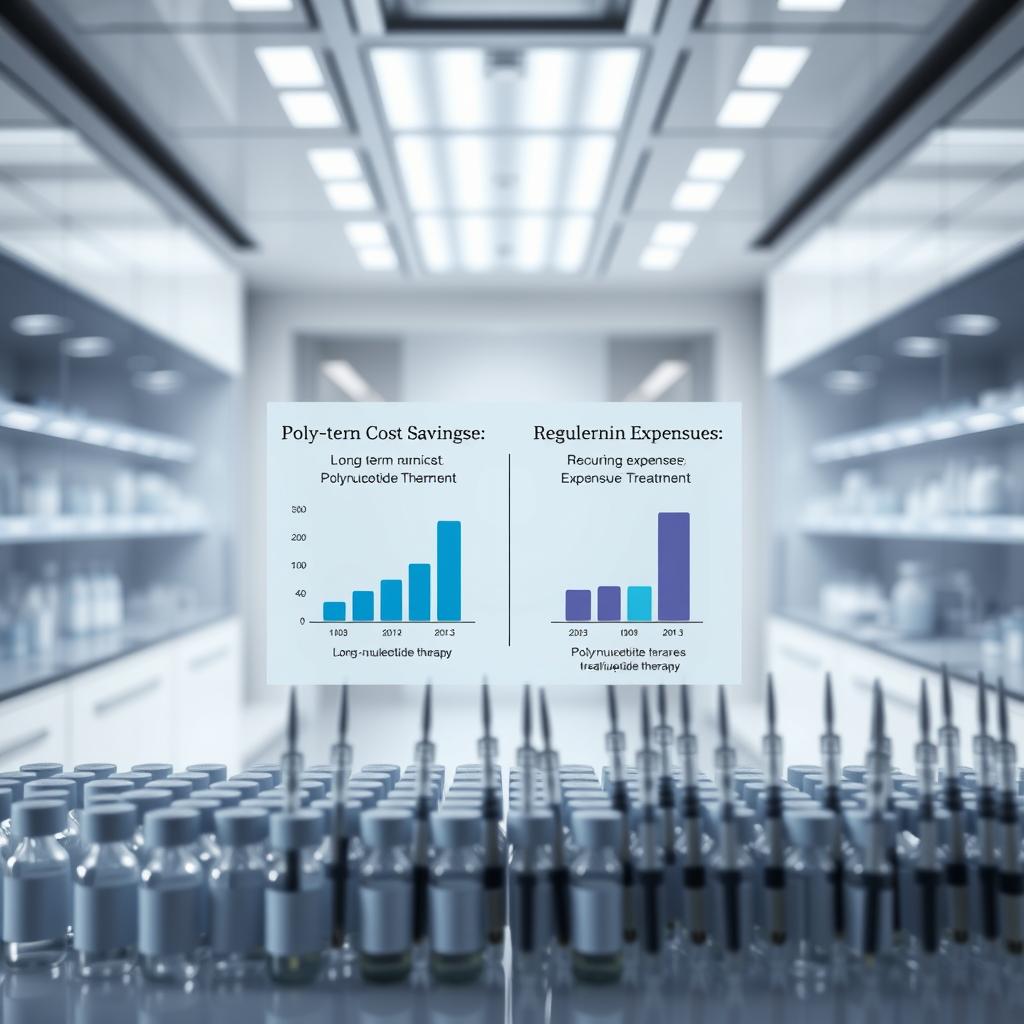
When deciding between polynucleotide therapy and Botox, consider the costs and benefits. Polynucleotide therapy costs $500–$1,200 per session. Botox, on the other hand, is $300–$600 per area. But, it’s important to look at the bigger picture.
| Factor | Polynucleotide Therapy | Botox |
|---|---|---|
| Upfront Cost | $500–$1,200 per session | $300–$600 per area |
| Frequency | 3–4 initial sessions, then maintenance every 6–12 months | Repeat every 3–4 months |
| Long-Term Savings | Potential savings over time due to less frequent treatments | Higher cumulative costs from frequent sessions |
Let’s look at a monthly cost example. Polynucleotide therapy might seem pricier at first. But, after a year, it could save you money compared to Botox. Prices can vary based on where you are and the clinic’s reputation. Some places offer payment plans to help with costs.
- Initial polynucleotide sessions target long-term skin health benefits
- Botox requires ongoing monthly spending for sustained results
- Check if your clinic offers package deals for multiple sessions
Price is important, but so is the value you get. Polynucleotides improve collagen and hydration, offering more benefits than Botox’s wrinkle reduction. Talk to your provider about how often you’ll need treatments and the long-term costs.
Potential Side Effects and Safety Profile of Polynucleotide Cosmetic Treatments
When you choose a polynucleotide anti-aging treatment, knowing its safety is key. This new therapy gives natural-looking results. But, it’s crucial to understand what you might feel.
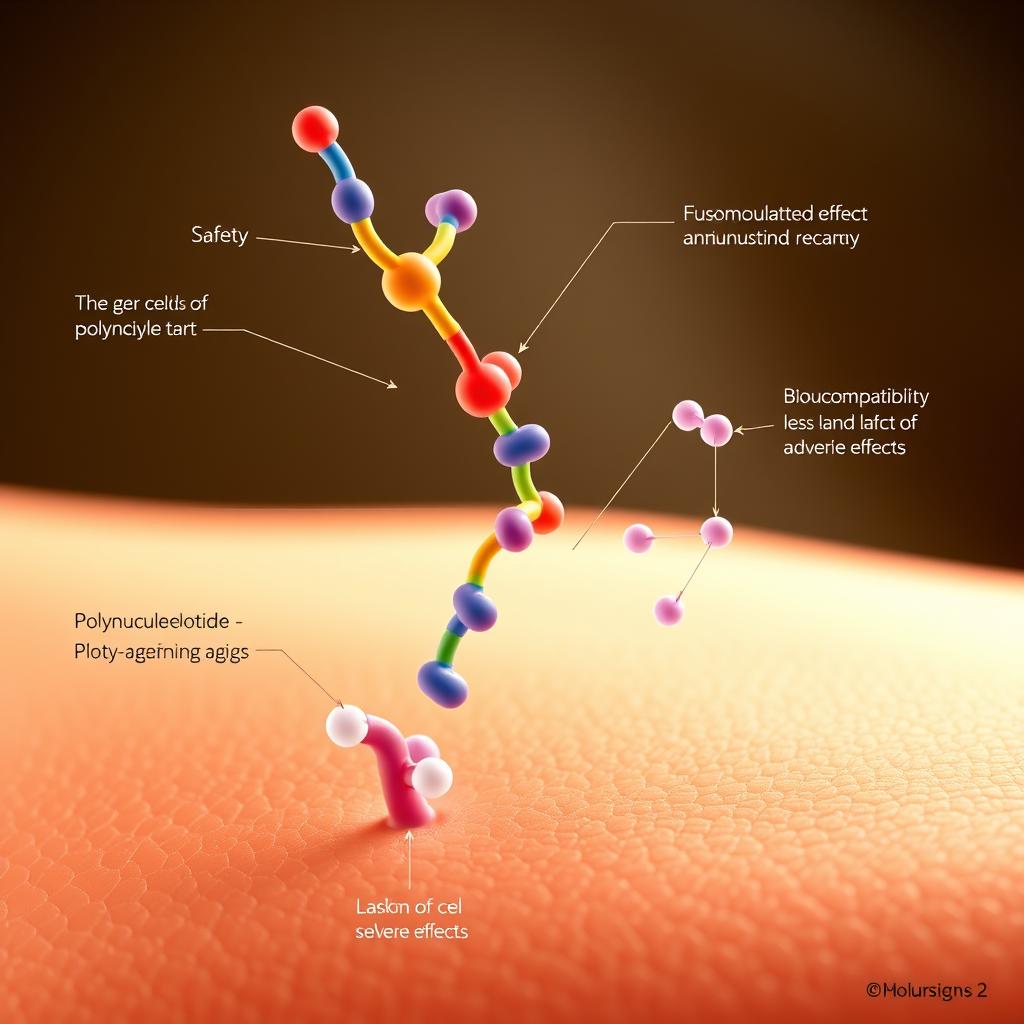
Common Temporary Reactions
Most people experience mild side effects at the injection site. These can include:
- Redness or swelling lasting 24–48 hours
- Minor bruising that fades in 3–7 days
- Tenderness during the first few hours
These symptoms usually go away by themselves. But, if you have severe reactions like long-lasting swelling or infection, see a doctor right away.
Long-Term Safety Considerations
Polynucleotides have been used safely in medicine for years. The FDA supports their use in cosmetics, even though research on long-term effects is still growing. Studies show no signs of permanent harm or allergic reactions when used correctly.
How Polynucleotides Compare to Botox in Safety
Polynucleotides and Botox work differently. Botox paralyzes muscles, while polynucleotides boost collagen. This makes polynucleotides safer from risks like drooping or asymmetry seen with Botox. The side effects also vary:
- Botox: Can cause headaches or muscle weakness
- Polynucleotides: Mainly skin reactions at the injection site
Both treatments are safe, but polynucleotides are a non-invasive option with fewer risks.
Celebrity Endorsements and Expert Opinions on Polynucleotide Anti-Aging Treatments
Polynucleotide skincare trends are on the rise, thanks to famous faces in beauty. Stars like Jennifer Aniston and Halle Berry have talked about using these treatments. They say it helps them keep their skin looking young.
Experts also support polynucleotides as a smart way to fight aging. They say it’s better than other methods.
“Polynucleotides work with your skin’s natural repair processes, unlike Botox’s temporary muscle freezing,” says Dr. Ava Shamban, a celebrity dermatologist. “This makes them a cornerstone of modern anti-aging.”
Here’s what professionals highlight about polynucleotide anti-aging:
- Boosts collagen without invasive procedures
- Addresses multiple skin concerns at once
- Aligns with “prejuvenation”—preventing aging before it starts
Top spas and dermatology clinics now offer polynucleotide injections. Brands like Olay and Neutrogena have added polynucleotide-inspired serums to their lines. This shows it’s not just a trend. It’s a move towards science-backed, long-term solutions.
When experts and A-listers trust it, you know it’s here to stay.
Conclusion: Is It Time to Switch From Botox to Polynucleotides?
Your skin journey is unique, and choosing between Botox alternatives like polynucleotides depends on your goals. If you want long-term skin health, polynucleotides are a natural choice. They boost collagen, improve elasticity, and hydrate skin cells, offering benefits that last weeks, not days.
Unlike Botox, which paralyzes muscles, polynucleotides work with your skin’s biology to encourage regeneration. This makes them a great option for those looking for natural solutions.
Ask yourself: Do you want subtle, lasting improvements that align with your skin’s natural aging process? Or do you need immediate results for an event? Botox is still great for quick wrinkle smoothing, but polynucleotides focus on deeper skin quality.
Budget also matters. While costs vary, polynucleotides often provide value through sustained results. They offer a long-term solution that can save you money in the long run.
Consult a certified dermatologist who offers both treatments. They’ll assess your skin type, concerns, and lifestyle to recommend the best fit. Advances in skincare mean you’re no longer limited to one-size-fits-all solutions.
Why polynucleotides are the new Botox for many? They combine science with a holistic approach to aging gracefully. The choice is yours—explore options that align with how you want to look and feel.
FAQ
What are polynucleotides, and how do they differ from Botox?
Polynucleotides are made of nucleotides, which are DNA’s building blocks. Botox works by paralyzing muscles to reduce wrinkles. But, polynucleotides boost skin regeneration, improving its quality by increasing collagen and hydration.
What are the main benefits of polynucleotide skin rejuvenation?
Polynucleotide treatments enhance collagen, improve skin texture, and reduce wrinkles. They also hydrate the skin. This natural process leads to a more youthful look over time.
Are polynucleotide injections painful?
Most people find polynucleotide injections barely uncomfortable. A numbing cream is applied before treatment. The needles used cause less pain than other injections.
How long do the results of polynucleotide treatments last?
Results from polynucleotide treatments can last a long time. You might see changes in a few weeks. Full effects take 1-3 months. Some may need touch-ups every 6-12 months.
Who is an ideal candidate for polynucleotide therapy?
Anyone wanting better skin texture, elasticity, and hydration is a good candidate. It works for all ages. Younger people can prevent signs of aging, while older people can restore their skin.
What should I expect during and after my polynucleotide treatment?
The treatment is quick, lasting 30-45 minutes. After, avoid intense activities for a few days. Mild redness or swelling is common but goes away in a couple of days.
How do polynucleotides compare to Botox in terms of safety?
Polynucleotides are very safe, with mild and temporary side effects. They are safe for long-term use. Botox has different risks and may not be for everyone.
What are some misconceptions about polynucleotides?
Some think polynucleotides are just fillers. But, they stimulate your skin’s healing, improving it naturally over time. They’re not just for filling in lines.
Can I combine polynucleotide treatments with other cosmetic procedures?
Yes, you can mix polynucleotide treatments with other procedures for better results. Talking to a qualified practitioner can help find the best mix for you.